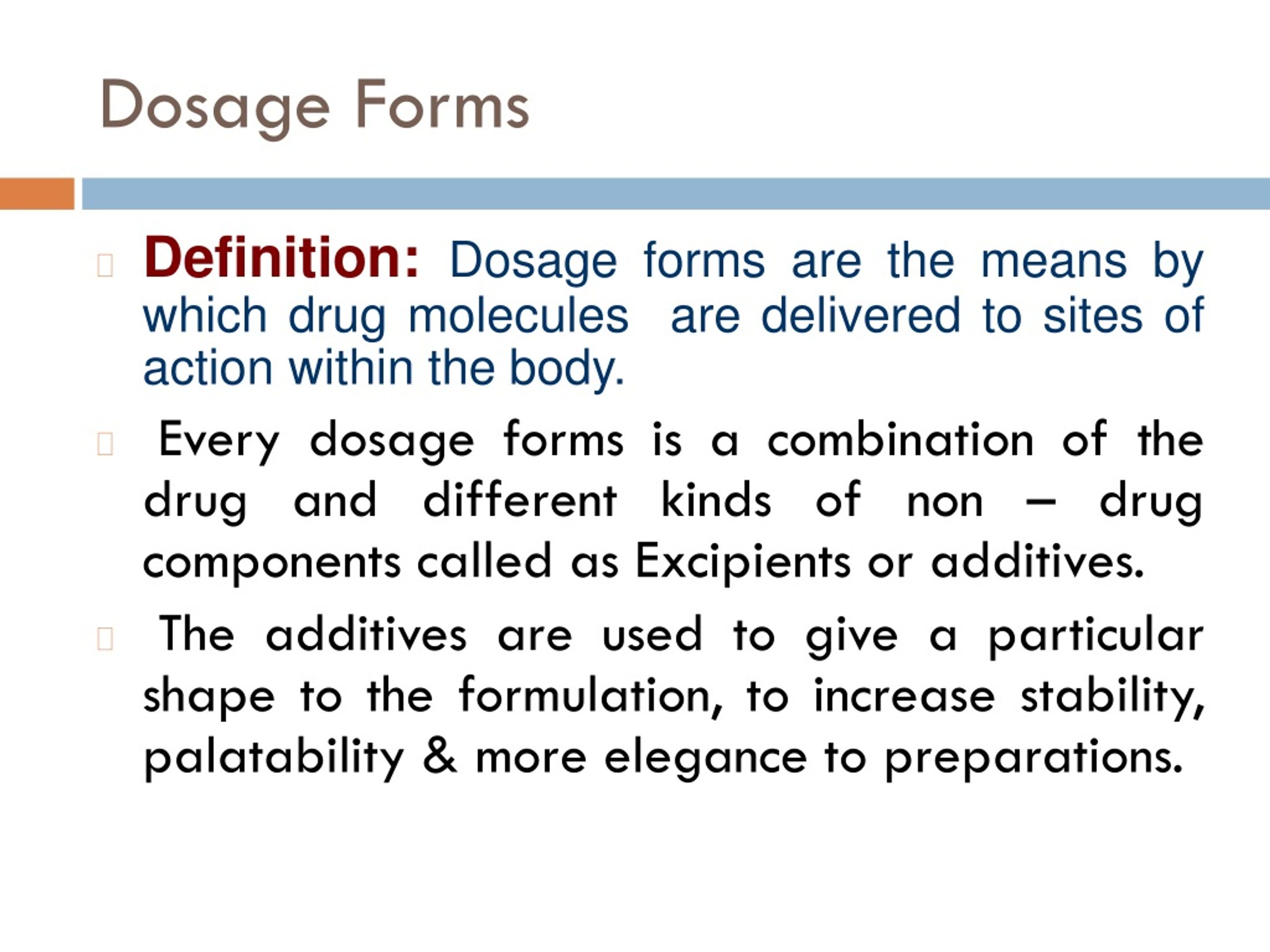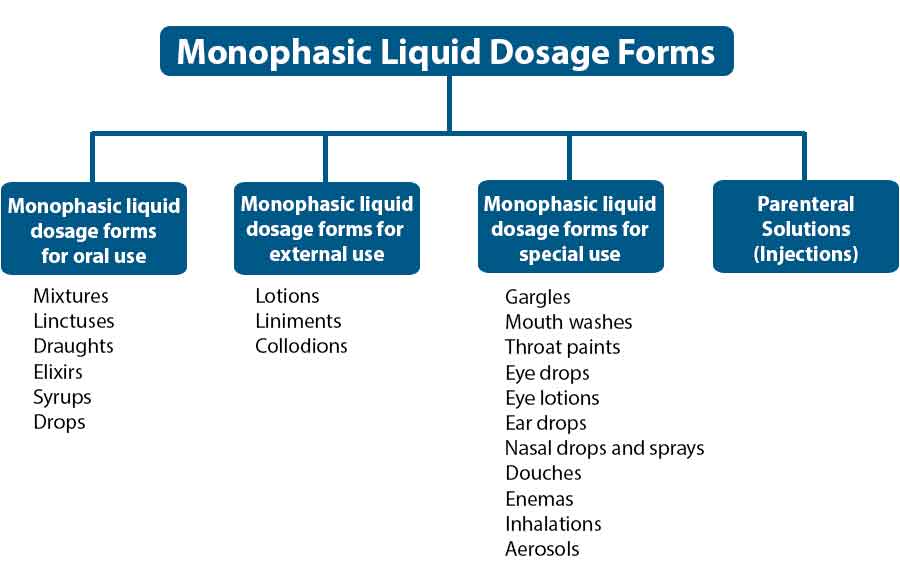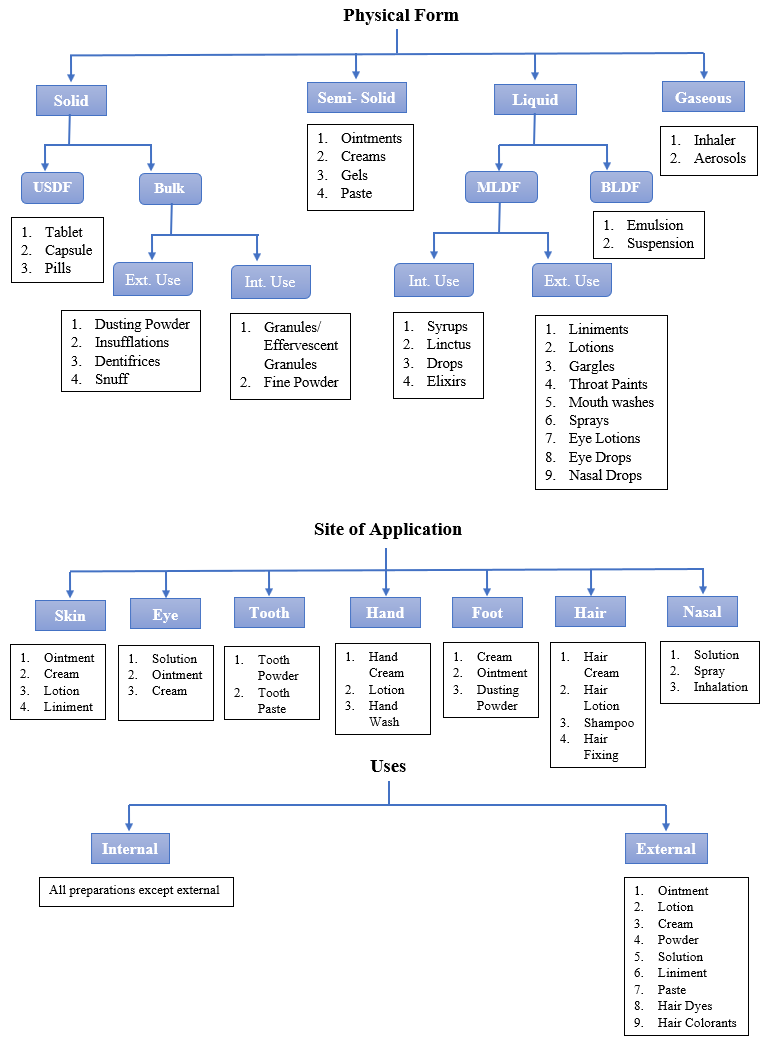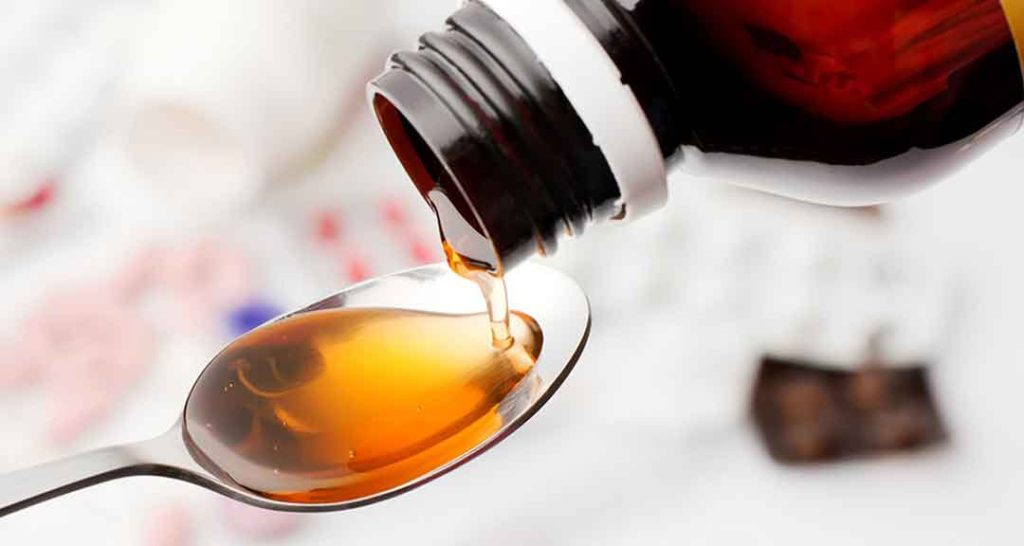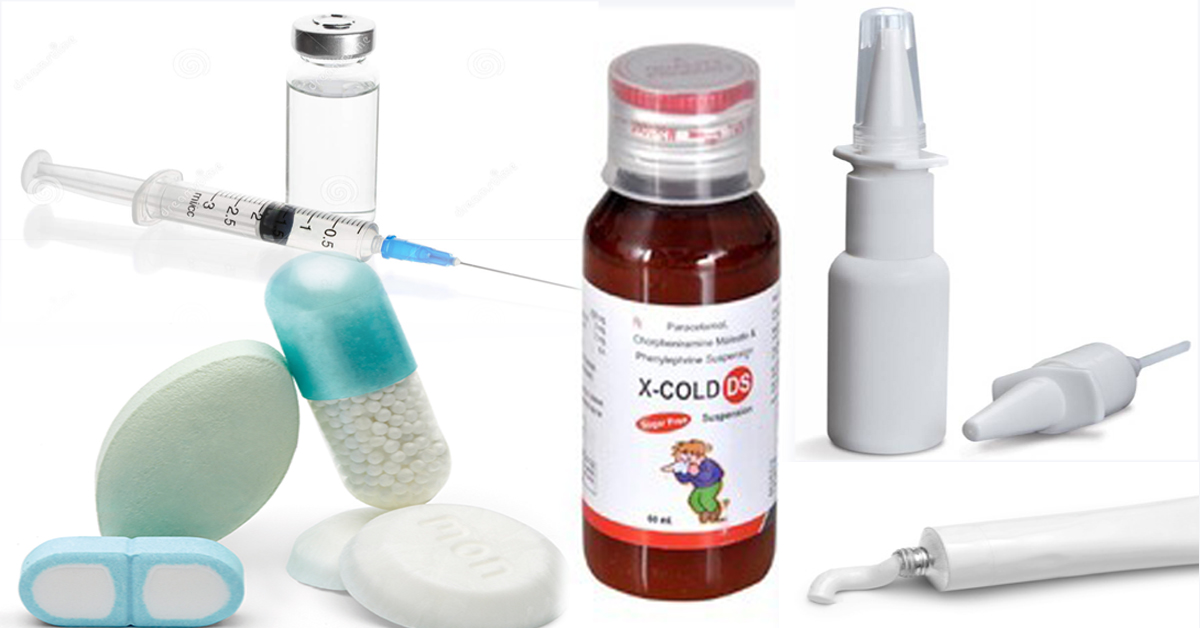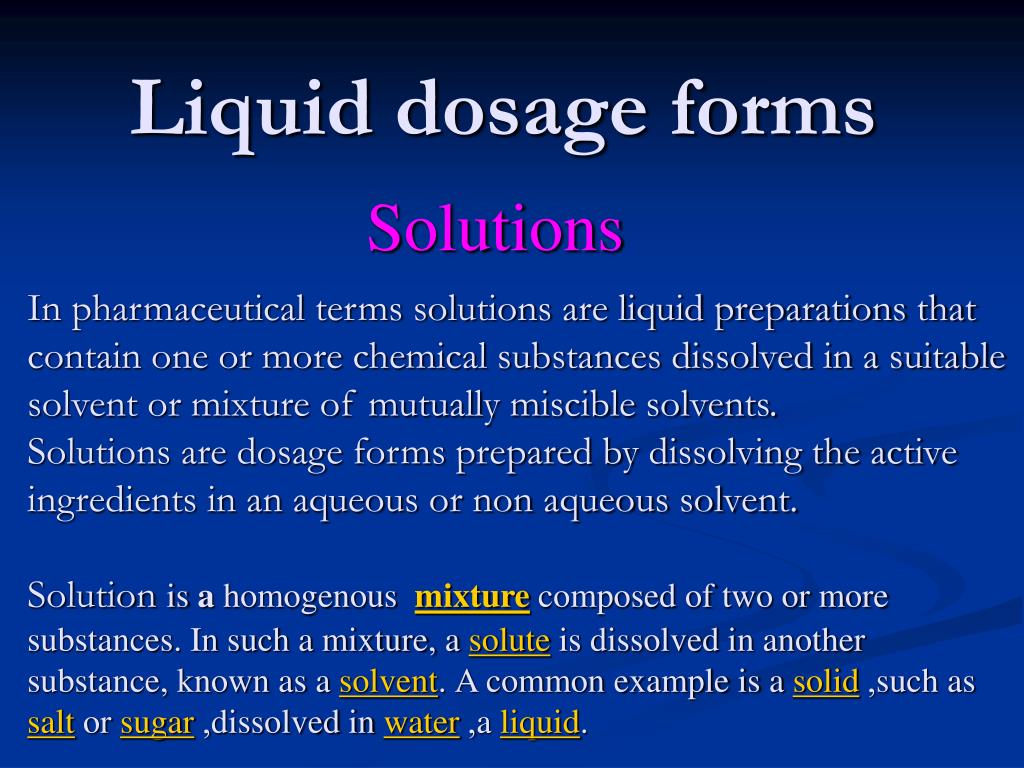Dosage Form Definition - A term for the physical characteristics of a drug product—e.g., tablet, capsule or solution—which contains the drug substance and almost invariably other ingredients, such as excipient, fillers,. Dosage form refers to the physical form that contains active pharmaceutical ingredients (api) combined with selected additional ingredients (excipients) and intended. Dosage forms are the mechanism by which drug molecules / apis are administered to areas of action inside the body to generate maximum intended benefits and the lowest. Dosage forms, also known as pharmaceutical preparations, are integral in administering medications, ensuring that drugs are delivered safely and effectively to patients. Dosage forms (also called unit doses) are pharmaceutical drug products presented in a specific form for use. They contain a mixture of active ingredients and inactive components.
Dosage forms, also known as pharmaceutical preparations, are integral in administering medications, ensuring that drugs are delivered safely and effectively to patients. Dosage forms are the mechanism by which drug molecules / apis are administered to areas of action inside the body to generate maximum intended benefits and the lowest. Dosage form refers to the physical form that contains active pharmaceutical ingredients (api) combined with selected additional ingredients (excipients) and intended. They contain a mixture of active ingredients and inactive components. A term for the physical characteristics of a drug product—e.g., tablet, capsule or solution—which contains the drug substance and almost invariably other ingredients, such as excipient, fillers,. Dosage forms (also called unit doses) are pharmaceutical drug products presented in a specific form for use.
Dosage forms are the mechanism by which drug molecules / apis are administered to areas of action inside the body to generate maximum intended benefits and the lowest. Dosage forms, also known as pharmaceutical preparations, are integral in administering medications, ensuring that drugs are delivered safely and effectively to patients. A term for the physical characteristics of a drug product—e.g., tablet, capsule or solution—which contains the drug substance and almost invariably other ingredients, such as excipient, fillers,. Dosage forms (also called unit doses) are pharmaceutical drug products presented in a specific form for use. They contain a mixture of active ingredients and inactive components. Dosage form refers to the physical form that contains active pharmaceutical ingredients (api) combined with selected additional ingredients (excipients) and intended.
Ch 6 (Part B) LIQUID DOSAGE FORM Lecture 3 ELIXIRS & TINCTURES
Dosage forms (also called unit doses) are pharmaceutical drug products presented in a specific form for use. Dosage forms, also known as pharmaceutical preparations, are integral in administering medications, ensuring that drugs are delivered safely and effectively to patients. Dosage forms are the mechanism by which drug molecules / apis are administered to areas of action inside the body to.
PPT INTRODUCTION TO DIFFERENT DOSAGE FORMS PowerPoint Presentation
They contain a mixture of active ingredients and inactive components. Dosage forms, also known as pharmaceutical preparations, are integral in administering medications, ensuring that drugs are delivered safely and effectively to patients. A term for the physical characteristics of a drug product—e.g., tablet, capsule or solution—which contains the drug substance and almost invariably other ingredients, such as excipient, fillers,. Dosage.
Explain the Different Types of Drug Formulations
Dosage forms, also known as pharmaceutical preparations, are integral in administering medications, ensuring that drugs are delivered safely and effectively to patients. Dosage forms are the mechanism by which drug molecules / apis are administered to areas of action inside the body to generate maximum intended benefits and the lowest. Dosage form refers to the physical form that contains active.
Frequently Asked Questions on Pharmaceutical Dosage Forms
Dosage forms (also called unit doses) are pharmaceutical drug products presented in a specific form for use. Dosage forms, also known as pharmaceutical preparations, are integral in administering medications, ensuring that drugs are delivered safely and effectively to patients. A term for the physical characteristics of a drug product—e.g., tablet, capsule or solution—which contains the drug substance and almost invariably.
Liquid Dosage Form
Dosage forms (also called unit doses) are pharmaceutical drug products presented in a specific form for use. Dosage forms, also known as pharmaceutical preparations, are integral in administering medications, ensuring that drugs are delivered safely and effectively to patients. Dosage form refers to the physical form that contains active pharmaceutical ingredients (api) combined with selected additional ingredients (excipients) and intended..
SOLUTION Types of Dosage Forms Presentation Studypool
Dosage forms (also called unit doses) are pharmaceutical drug products presented in a specific form for use. Dosage form refers to the physical form that contains active pharmaceutical ingredients (api) combined with selected additional ingredients (excipients) and intended. A term for the physical characteristics of a drug product—e.g., tablet, capsule or solution—which contains the drug substance and almost invariably other.
វិទ្យាសាស្ត្រឱសថ Pharmaceutical Sciences Pharmaceutical Dosage Forms
Dosage forms are the mechanism by which drug molecules / apis are administered to areas of action inside the body to generate maximum intended benefits and the lowest. They contain a mixture of active ingredients and inactive components. Dosage forms, also known as pharmaceutical preparations, are integral in administering medications, ensuring that drugs are delivered safely and effectively to patients..
PPT Liquid dosage forms PowerPoint Presentation, free download ID
Dosage form refers to the physical form that contains active pharmaceutical ingredients (api) combined with selected additional ingredients (excipients) and intended. They contain a mixture of active ingredients and inactive components. Dosage forms (also called unit doses) are pharmaceutical drug products presented in a specific form for use. A term for the physical characteristics of a drug product—e.g., tablet, capsule.
Pharmaceutical Dosage Forms Dosage Forms of Drugs Different Types of
Dosage forms (also called unit doses) are pharmaceutical drug products presented in a specific form for use. Dosage form refers to the physical form that contains active pharmaceutical ingredients (api) combined with selected additional ingredients (excipients) and intended. They contain a mixture of active ingredients and inactive components. Dosage forms, also known as pharmaceutical preparations, are integral in administering medications,.
Classification of Dosage Form Solution Parmacy
Dosage forms are the mechanism by which drug molecules / apis are administered to areas of action inside the body to generate maximum intended benefits and the lowest. Dosage form refers to the physical form that contains active pharmaceutical ingredients (api) combined with selected additional ingredients (excipients) and intended. Dosage forms (also called unit doses) are pharmaceutical drug products presented.
Dosage Forms Are The Mechanism By Which Drug Molecules / Apis Are Administered To Areas Of Action Inside The Body To Generate Maximum Intended Benefits And The Lowest.
Dosage forms, also known as pharmaceutical preparations, are integral in administering medications, ensuring that drugs are delivered safely and effectively to patients. A term for the physical characteristics of a drug product—e.g., tablet, capsule or solution—which contains the drug substance and almost invariably other ingredients, such as excipient, fillers,. Dosage forms (also called unit doses) are pharmaceutical drug products presented in a specific form for use. They contain a mixture of active ingredients and inactive components.

